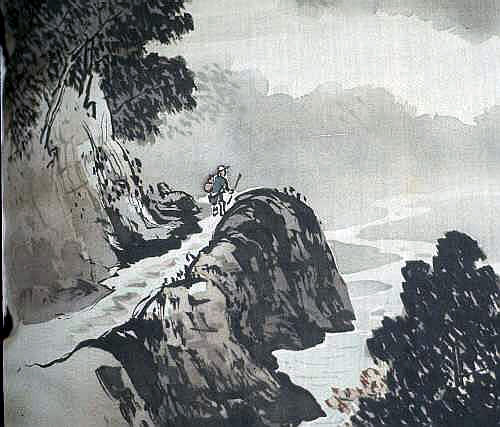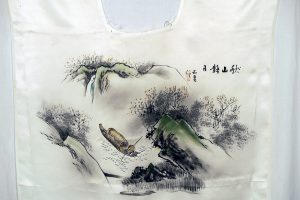Description
Antique Japanese textiles are among the world’s most virtuous examples of a craft elevated to an art form. To connoisseurs of fine art, these extraordinary pieces of fabric exhibit an artistic sensibility that is unique in the world. Silk topcoats (“Haori”) were required to be worn as formal overcoats by the upper classes in Japan. The secret that made each garment unique was the hidden artwork on the inside back lining panel. When the full Haori cannot be preserved for framing, the inner back panel becomes available for other decorative uses. The back panel of each Haori was commissioned by its owner as an individual work of art, incorporating symbols of significance to the owner. Thus, this Pillow displays the best of what was most important to an individual in Japan before the turn of the century.
This landscape scene is typically Japanese in that the eye of the viewer is swept upward along the path of the climber towards the mountains covered in mist. It was painted using the Rice Paste Resist technique which requires that each color be applied separately, while all the others are painted out in the rice paste. Each time a new color was added, the rice paste had to be removed by soaking it out over and over again in the local river water. What makes this art truly unique, however, is the inclusion of the “Sumie” or ink painting technique which utilizes varying shades of black for its dramatic effect.
A Certificate of Authenticity is included.
TTAC will personally pack and ship via UPS at company expense within the continental United States.









